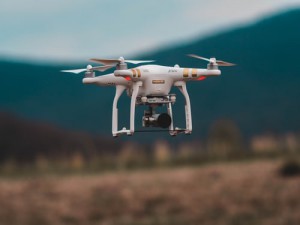Submitted by Leanne McRae, Curtin Univeristy
Quirky footage appeared in the digisphere last week of a single Dalek – antagonists from the long-running television Dr Who – monitoring the streets of a sleepy English village and directing its residents to stay in-doors. It was shared as a humorous aside to the COVID crisis. The single Dalek trundles down the street demanding that people stay inside and practice social distancing. The ironies of the heritage of Dr Who special effects being notoriously dodgy is conjured as the Dalek bumps down the street.
Daleks, known to Dr Who fans to be evil invaders bent on conquering the universe and enslaving populations, are an apt representation of the anxieties currently manifesting in the COVID situation. With protestors in the United States demanding a release from stay-home restrictions and footage of the Chinese arc welding people into apartment buildings – most likely leaving some to starve and/or die – the tensions between the need for restricted movement and the extension of the state in demanding our compliance to these rules for public health is currently bubbling up into tenuous and tense ambivalence.
Meanwhile, in Western Australia, the WA police announced the use of drones to monitor and police social distancing in public spaces. The drones will be equipped with flashing lights and sirens. Images also showed drones equipped with a loudspeaker presumably to enable police to yell at offenders and issue the up $1000 fine if found violating public distancing rules.
Hands-off or remote policing is not new with the era of big data enabling data-sets to be used in pre-crime. This is not the sexy supernatural pre-crime potentialities of the Minority Report where pre-cognitives kept in a petri-dish were able to conjure predictions of crime and therefore guilt. Pre-crime is simply predictive mapping of trends revealed by data gathering. For example, if a particular area sees a spike in home invasions, it is not unreasonable to predict that more home invasions are likely to occur in the immediate future and to redirect resources towards that crime prevention.
Yet, this type of policing-at-a-distance required by the COVID demonstrates how police to negotiate interrogation, arrest, and incarceration during an era of no-contact. Technologies designed to distance police from perpetrators have become increasingly prevalent in an age of the militarisation of law enforcement. Protective equipment, water cannons, weaponry, all serve to distance police from perpetrators not just in order to protect police from harm but also to distance them from the embodied realities of the criminals they interact with. Keeping criminals and their concerns discrete and disengaged is a crucial part of modern neoliberal policing.
The drone as a military and policing technology suffers from an identity crisis. While drones are increasingly used in leisure – in fishing and photography, for example – the attachment to surveillance and authoritarianism remains potent. When Amazon announced their intention to use drones to deliver packages, immediate concerns about security and privacy were raised by activists. It seems that the meaningful movement of the drone from military into consumer consciousness was anticipated too early by Amazon. Nevertheless, it seems they remain on the cusp of the seductive shifting of drone utility. Prime Air began in 2013 but was beset with difficulties in logistics and navigating newly established drone regulations in cities that often have strict boundaries on where drones can be flown. In 2018 Prime Air was promising to deliver packages within 30 minutes. This commercial activation of the drone remains as yet untapped.
Resistance groups have also leveraged drones in their activism as a way to keep police and law enforcement accountable for their actions. At Standing Rock in South Dakota where water protectors camped in protest of the Dakota Access Pipeline, while law enforcement asserted their heavy-handed authority with overflying helicopters, activists used drones to not only document the daily life of the camp and provide evidence of the peaceful protest underway, but also to log and hopefully restrain the heavy-handed violence of the police and private security on site.
Drones currently occupy anxious space as both a stealth military technology hovering high above and localised social surveillance system that conveys authoritarian intentions to control populations as they move through public space. The mobile proximities of drones offer contested space through which to consider authority, resistance, bodies and power. The current COVID crisis has offered an ideal circumstance for the activation of drones in public space as a normal and needed public health measure funnelled through public policing protocols. This is complex territory that requires consistent and rigorous debate. As we move into an era where surveillance is increasingly normalised and the data gathered from those activities is on-sold to third parties both private and public, the consequences for civic engagement, social justice, and individual agency are significant. Crisis cannot be used to circumvent important public discussions about space, autonomy, regulation and surveillance.
________________________________________________________________________________________________________________________________

